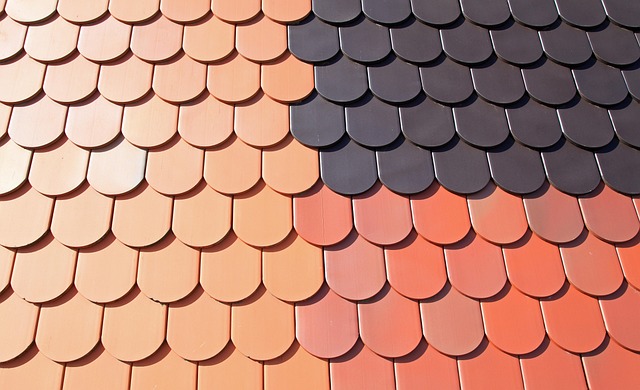Low slope roofing is a practical and cost-effective solution for commercial buildings, especially warehouses, offering benefits like reduced material needs, minimal maintenance, superior drainage systems, enhanced aesthetic appeal, improved energy efficiency, and optimized space. Common materials include bitumen, PVC, and EPDM, with proper drainage crucial for longevity. Installation involves assessing structural integrity, laying a sub-roofing layer, applying water-resistant membranes, and sealing lightweight waterproof materials. Regular upkeep focuses on wear, leaks, and damage around drains and flashing to ensure roofs last over 20 years.
Low slope roofing, characterized by its shallow pitch, is a prevalent choice for warehouses and large commercial structures. This article offers a comprehensive guide to this versatile roofing system. We’ll explore its basic principles, highlighting its widespread applications in industrial settings. The benefits of low slope roofs, including enhanced energy efficiency, will be discussed, along with an overview of common materials and installation methods. Furthermore, we’ll delve into maintenance strategies to ensure their longevity.
- Understanding Low Slope Roofing: A Basic Overview
- Common Applications: Warehouses and Large Commercial Spaces
- Advantages of Shallow-Pitch Roof Systems
- Materials Used in Low Slope Roofing
- Installation Process and Best Practices
- Maintenance and Longevity of Low Slope Roofs
Understanding Low Slope Roofing: A Basic Overview

Low slope roofing refers to a type of roofing system designed for commercial buildings, particularly warehouses and large spaces, characterized by its shallow pitch or slight angle. Unlike steep-sloped roofs that require specialized materials and construction techniques, low slope roofs use a variety of flat or gently curved membranes and systems. These include single-ply membranes, bitumen-based sheets, and metal panels specifically engineered for level or slightly inclined surfaces.
This design offers several advantages tailored to the needs of commercial properties. Low slope roofing allows for easier installation, reduced material costs, and minimal maintenance requirements compared to traditional sloped roof designs. Additionally, they provide efficient roof drainage systems, which are crucial for preventing water damage and ensuring structural integrity in areas prone to heavy rainfall or snow accumulation.
Common Applications: Warehouses and Large Commercial Spaces

Low slope roofing systems are the go-to choice for many warehouses and large commercial buildings due to their functionality and cost-effectiveness. These structures often require a robust yet economical solution, and low pitch roofs perfectly cater to these needs. The flat or gently sloping surface is ideal for efficient roof drainage systems, ensuring water is swiftly removed, which is crucial in preventing damage and prolonging the lifespan of the roofing material.
In addition to their practical advantages, low slope roofs offer aesthetic benefits. They can be designed to blend seamlessly with the overall architecture of the building, creating a sleek and modern look that is increasingly sought after in commercial spaces. This versatility makes them a popular choice for businesses aiming to enhance their image while also benefiting from durable and low-maintenance roofing solutions.
Advantages of Shallow-Pitch Roof Systems

Low slope roofing systems, also known as shallow-pitched roofs, offer a range of advantages for warehouses and large commercial spaces. Firstly, their design allows for efficient use of space, as they can accommodate additional flooring or storage areas compared to traditional sloped roof designs. This makes them particularly attractive for facilities with limited vertical real estate. Additionally, these systems are often more cost-effective due to the reduced material requirements and simpler installation processes compared to steep-pitched roofs.
Another key benefit of low slope roofing is their superior insulation properties. By eliminating the need for significant slope, these roofs can maintain a tighter seal, minimizing heat transfer and enhancing energy efficiency. Moreover, roof drainage systems integrated into low pitch roofs are designed to handle heavy rainfall effectively, preventing water damage and ensuring the longevity of the structure. This combination of space optimization, cost savings, and improved functionality makes low slope roofing a popular choice for modern commercial buildings.
Materials Used in Low Slope Roofing

Low slope roofing systems, as the name suggests, involve roofing designs with a gentle or shallow pitch, typically less than 30 degrees. This style is prevalent in commercial and industrial buildings, including warehouses, due to its practicality and cost-effectiveness. When it comes to materials, several options are available to cater to different needs and preferences. One of the most common choices is bitumen, often used in combination with fiberglass or asphalt mats, creating a durable and flexible membrane that can withstand various environmental conditions.
Another popular material is PVC (Polyvinyl Chloride), known for its excellent water resistance and long-lasting performance. EPDM (Ethylene Propylene Diene Monomer) is another synthetic rubber option, offering superior elasticity and resistance to ultraviolet rays. These materials are not only low-maintenance but also contribute to the overall energy efficiency of the building by reflecting sunlight and reducing heat absorption, a benefit especially relevant for large commercial spaces with extensive roof areas. Additionally, proper roof drainage systems become crucial with low slope roofs to ensure efficient water run-off and prevent potential damage caused by pooling water.
Installation Process and Best Practices

The installation process for low slope roofing systems, often found in warehouses and large commercial spaces, involves several key steps to ensure durability and functionality. It starts with meticulous preparation, including assessing the structure’s load-bearing capacity and ensuring proper ventilation. A smooth sub-roofing layer is then laid down as a foundation, followed by the application of a water-resistant membrane to shield against moisture intrusion. The heart of the low slope roof lies in its lightweight, waterproof materials, such as EPDM or TPO, which are carefully rolled out and sealed at joints for comprehensive protection.
Best practices dictate paying close attention to detail during installation. This includes ensuring proper roof drainage systems to divert water effectively, preventing water pooling that could compromise the structure. A crucial aspect is also achieving a seamless transition between materials and components, minimizing seams and potential weak points. Regular inspections throughout the installation process and after completion are vital for early detection of any issues. By adhering to these practices, commercial property owners can expect long-lasting, low pitch roof systems that enhance structural integrity while maintaining operational efficiency in their warehouses and large commercial spaces.
Maintenance and Longevity of Low Slope Roofs

Low slope roofing systems, often found in warehouses and large commercial spaces, offer a unique set of benefits when it comes to maintenance and longevity. Due to their shallow pitch, these roofs require less frequent cleaning and inspection compared to steeper sloped roof designs. This reduced maintenance frequency translates into cost savings for business owners over time.
Regular upkeep, however, remains crucial to ensure the durability of low pitch roofs. Key aspects include checking for signs of wear, leaks, or damage, especially around roof drains and flashing. Efficient roof drainage systems play a vital role in protecting against water-related issues. By promptly addressing any concerns, building managers can maximize the lifespan of these roofs, often extending well beyond 20 years with proper care.
